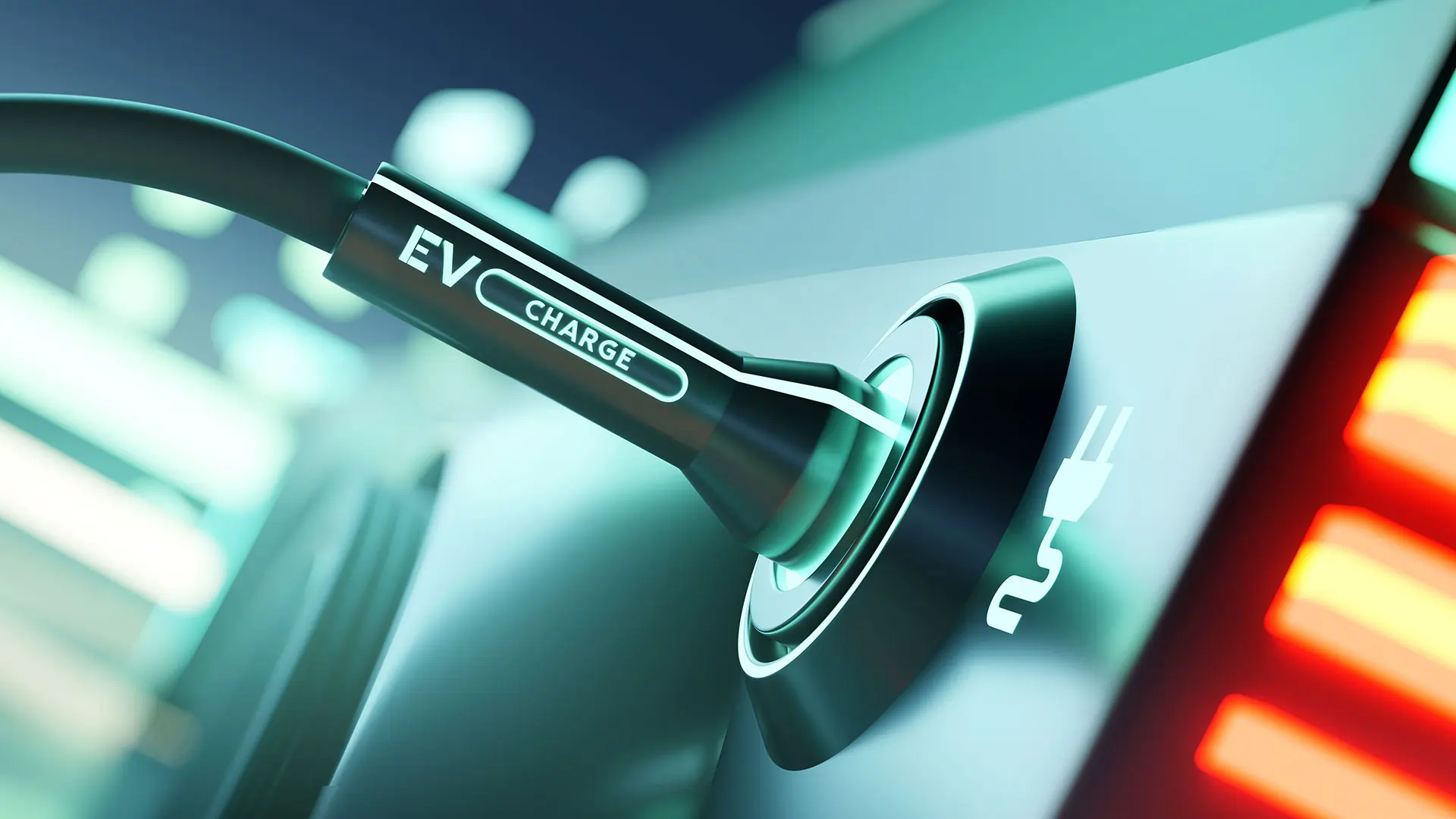Statistics suggest that most Canadians are at least thinking about buying an electric vehicle in the near future. The three main obstacles are cost, battery range, and availability of charging stations. If price is your main concern, it’s probably not quite time yet, but we should be there by 2023.
With electric vehicles (EVs) growing in popularity all around the world, Canada hasn’t exactly been leading the way. Whereas EVs now make up more than 11% of total passenger vehicle sales in Europe, for instance, they only account for 3.5% of Canadian sales.
That said, the EV movement in Canada is definitely building momentum, and in fact a recent survey revealed that nearly 70% of people in the market for a new ride in the next five years are planning to go electric.
Reasons not to buy an EV
There are three primary reasons that Canadians cite for NOT buying an EV:
- Cost: They are generally more expensive than gas-powered vehicles
- Battery range: They have limited range (need to recharge too often)
- Charging infrastructure: There are not enough charging stations
The automotive industry, along with federal and provincial governments, have been working to remove each of these obstacles, and have made significant progress on all fronts.
1. Cost
The most affordable electric vehicles available in Canada right now sell for $40,000 to $45,000. That’s two to three times the cost of the most affordable gasoline cars. When looking at specific vehicles that are available in both electric and gas-powered models (e.g., Kia Soul, Mini Cooper 3DR, Hyundai Kona, BMW 4 Series coupe), electric models can be anywhere from 30% to 120% more expensive to buy.
If cost is a big factor in your buying decisions, double the price is a lot to overcome. However, there are other costs that can level the playing field to some extent.
Let’s start with those that are inherent to electric vehicles. (All of the following figures assume 20,000 km of driving per year):
- Because electricity is cheaper than gasoline, you can save between $1,000 and $1,500 a year on fuel (based on a Chevy Bolt in BC).
- Because electric vehicles have fewer moving parts, you can save about $750 a year ($600 USD) on service/maintenance.
- Some insurance companies offer a small discount for hybrids and EVs, but if that insurer isn’t already offering your lowest rate, the discount won’t make a difference.
So if you keep your vehicle for six years (the Canadian average), that means you can save between $10,500 and $13,500 on fuel, maintenance and insurance.
Then there are the government incentives:
- A federal rebate of up to $5,0001 for fully electric vehicles
- Provincial rebates for fully electric vehicles
- Up to $2,500 in Newfoundland and Labrador
- Up to $3,000 in Nova Scotia and British Columbia
- Up to $5,000 in New Brunswick and Prince Edward Island
- Up to $8,000 in Quebec
- There used to be a rebate of up to $14,000 in Ontario, but it was cancelled in 2018
Note that most of the rebates don’t apply beyond a certain price range ($45,000 to $60,000).
That means that you can save $5,000 to $13,000 on the purchase of a new EV. Lesser rebates may apply to leasing or buying used EVs. Some provinces have additional rebates for trading in your old gas-guzzler.
In places like Quebec, all these savings and rebates bring the total cost of an EV fairly close to that of a gas-powered vehicle. In Ontario, however, owning an EV is still quite a bit more expensive.
What’s on the horizon?
The reality is that the global market for electric cars has not been large enough to this point to create the economies of scale that would make the vehicles cheaper to produce and buy. And it’s not like the car companies have been making millions of dollars in profit either. Most EVs make no profit. Many lose money for the manufacturer.
That tide seems to be turning. The biggest contributor is the cost of the batteries. In 2020, the average cost of EV batteries was only 12% of what it was 10 years earlier ($130 USD/kWh). By 2030, it’s expected to be $58/kWh. Given this and other developments, experts predict that EVs will be profitable in the next few years, and that their prices will be on par with gas-powered vehicles by 2023.
| Driver | Vehicle | MSRP | Annual premium | |
|---|---|---|---|---|
| Alejandra, 45, married female, Etobicoke (Postal Code M8Z), speeding ticket in 2019 | Electric | Hyundai Kona Essential Electric 4DR 2WD | $47,249 | $1,290 |
| Gas | Hyundai Kona Essential 4DR 2WD | $22,364 | $1,321 | |
| Raj, 32, single male, London (N6H), minor at-fault in 2017, speeding ticket in 2021 | Electric | Hyundai Kia Soul EV Limited 5DR | $54,490 | $2,757 |
| Gas | Hyundai Kia Soul GT Limited 5DR | $30,760 | $2,769 | |
| Esam, 58, widowed male, Markham (L3P), clean record | Electric | Mini Cooper SE 3DR Electric | $41,990 | $1,443 |
| Gas | Mini Cooper 3DR | $24,665 | $1,409 | |
Get an auto insurance quote in a few short steps.
2. Battery range
Until the invention of the lithium-ion battery in the 1980s, it was always understood that electric vehicles were for short trips in the city. The typical range for an EV on a single charge was between 30 and 130 km. That made them impractical for many suburban Canadians who might drive 100 km or more a day, commuting to work, running errands, shuttling the kids to soccer, etc. Just the possibility that you might run out of juice in the middle of a busy day was enough to scare people off.
Then you also have to consider what people were used to. Most gas-powered cars can travel between 500 and 1,500 km on a full tank, depending on the driving conditions. A lot of Canadians are used to filling up once a week or less. The notion of having to plug in daily was not very attractive.
The Tesla Roadster was the first electric car to approach a battery range that suburban motorists considered practical. Using a lithium-ion battery, it could travel 320 to 355 km on a single charge. That is certainly enough for a hockey mom or dad not to get nervous. It also had enough speed and power to be legal for highway use.
Tesla took the automotive industry by surprise, and forced the major automakers to step up their game. The EV market has become much more crowded in recent years, and although there are still a few short range EVs on the market that target city dwellers, most of the EVs in the Canadian market now have battery ranges that would not scare off a busy suburbanite.
Here’s a very rough timeline of how EV battery range has evolved over the years:
- 1899-1974 – A variety of EVs were made that could travel 50-130 km on a single charge
- 1996-2003 – The GM EV1 could go up to 255 km on a charge
- 2008-2012 – The Tesla Roadster had a range of 320-355 km
- 2012 – Tesla introduced the Model S, with a top range of 560 km, and that range has been extended further with the launch of longer-range versions of the Model S
Today’s EV market is getting more and more crowded, but as you can see, most of the fully electric models available in Canada now have a range over 240 km.
| Model | Range |
| Tesla Model 3 | 151-531 |
| Mini Cooper SE 3 Door | 177 |
| Nissan LEAF | 240-363 |
| BMW i3 and i3s | 246 |
| Kia Soul EV | 248-383 |
| Hyundai IONIQ electric | 274 |
| Porsche Taycan Turbo | 309-407 |
| Audi e-tron | 329-357 |
| Jaguar I-PACE | 377 |
| Kia Niro EV | 385 |
| Hyundai Kona Electric | 415 |
| Tesla Model X | 415-565 |
| Chevy Bolt EV | 417 |
| Ford Mustang Mach-E | 418-483 |
| Lotus Evija | 434 |
| Tesla Model S | 462-629 |
| Tesla Model Y | 507-509 |
In 2020, Car and Driver magazine compiled results of the 12 EVs they had tested to date (all 2017 to 2019 models), and found that not one actually went as far on a single charge as the manufacturer advertised. The closest was the 2019 Audi e-tron, which made it to 93% of its advertised range. The worst was the 2019 Hyundai Kona Electric, which is supposed to have a range of 415 km, but only made it to 257 (62%).
Of course, there are lots of factors that play into how far an EV will actually travel on a single charge. For one thing, unlike gasoline vehicles, which are much more efficient travelling at higher (highway) speeds, EVs are most efficient at lower speeds. But the most important factor for Canadian drivers to know is that turning on the heat (a necessity in the winter months) can use a lot of battery power and potentially reduce the range of your EV by as much as 35%. This has never been an issue with gas-powered cars.
Note: Air conditioning also affects an EV’s range (reduces range by just under 20%), but the effect is equivalent to that seen in gas-powered vehicles.
What’s on the horizon?
The range of EV batteries continues to improve. Tesla has announced a relaunch of its iconic Roadster in 2023, with an expected range around 1,000 km. For the day-to-day purposes of most drivers, a range of 200-300 km is more than comfortable, especially since most EV owners charge nightly at home and public charging infrastructure is also improving.
Safety concern?
Chevy Bolt recalled due to fire risk
There have been a number of safety-related EV recalls due to the potential for batteries to spontaneously catch fire. The largest was related to the Chevy Bolt, affecting about 140,000 vehicles in North America, including at least 10,000 in Canada. Although Tesla has cited data showing that gas-powered cars catch fire more than 10 times as frequently as Tesla EVs, media cover the EV fires more closely because it is new technology.
There is no evidence to suggest that electric vehicles pose a greater fire risk than their gasoline cousins, but there is no doubt that battery fires are much harder to put out.
In September 2021, GM announced that it had addressed manufacturing defects that led to the fires, and resumed production on the Bolt. It also advised customers to take precautionary steps to be extra safe, including:
- Only charging to 90%
- Charging more frequently
- Not letting the battery get too low
- Parking outside after charging
- Avoiding indoor charging overnight
3. Charging infrastructure
When we talk about charging infrastructure for EVs, we need to first understand that most EV owners do 80% of their charging at home. Especially with battery ranges increasing, many EV drivers can go weeks or months without needing to use a public charging station.
Home charging costs
- Every EV comes with a 120-volt (Level 1) charger that you can plug into any outlet in your home. The problem is that these chargers are very slow, taking about 10 hours for every 100 km of battery range.That’s not practical for a car that you use every day.
- 240-volt (Level 2) chargers typically sell for under $1,000, but you will likely not have a 240-volt outlet in your garage, so add the cost of installation by a qualified electrician.
- 480-800-volt (Level 3) public chargers are becoming very popular due to their incredible speed (full charge in under an hour), but they are not practical for home use because the cost of installation can be $20,000 or more.
- Many jurisdictions have rebates that can cover half the cost of a Level 2 home charger.
- In terms of the ongoing cost of charging, it is whatever you pay for electricity where you live. Typically, it costs five times as much to power a gasoline vehicle than an EV for the same number of kilometres. That means the average Canadian EV driver saves about $1,100 a year.
Still, the anxiety persists, to the point that lack of charging infrastructure is the third most common reason given for not buying an EV. And indeed, a robust network of public charging stations is an important part of becoming an EV culture. If we’re asking Canadians to give up their gas-guzzlers for good, that means relying on EVs not only for daily errands, but also for that family trip to Quebec City, and that convention in Sault Ste. Marie.
A good way to see where we are with charging infrastructure is to compare it to gas stations:
- At latest count, there were just under 12,000 retail gas stations in Canada
- In February 2021, there were more than 6,000 EV charging stations across Canada
- More than 2,200 were fast chargers, that deliver a full charge in under an hour
- The total number of charging stations grew by 15% from 2020 to 2021
- The total number of fast-charging stations increased by 22% during that same period
- The City of Toronto has 864 charging stations – 60% are free to use
- The City of Calgary has 175 charging stations
Right now, EV charging infrastructure is not standardized the way that gas stations are. A few things to consider:
- Tesla has its own plugs, exclusively for Tesla vehicles
- About 670 of the above charging stations are Tesla stations
- More than half of all charging stations are Level 2 chargers (not fast-charging stations), meaning you might have to plug in for five hours or more to get a full charge
- Most fast-charging stations cost about $15 per hour, which should give you a full charge
- Some Level 2 charging stations are free, and those that are pay-per-use usually don’t cost more than $2.50 for a full charge
Don’t want to wait? Consider a hybrid
Although it definitely seems like fully electric vehicles are the future, many major car manufacturers offer hybrid versions of their most popular vehicles. A hybrid vehicle has a traditional internal combustion engine (ICE) AND an electric motor.
Typically, the car is powered by gasoline at highway speeds, and by the electric motor at lower speeds. You, as the driver, don’t have to switch from one to the other. The car’s onboard computer does it for you. In a non-plug-in hybrid, the battery is recharged while you drive.
Hybrids have been on the market since the turn of the century. Around 2010, carmakers started to offer plug-in hybrids (PHEVs). The difference? Because the PHEV can be pre-charged, it can run exclusively on the electric motor until the battery runs out. Although that range is typically only 25-50 km, that is enough for some city dwellers to run fully electric most of the time.
There are several benefits to buying a hybrid:
Cost:
- Hybrid prices are now almost on par with ICE vehicles. A few thousand more on the purchase price of a new car. Plug-ins are a little more pricey, but still much cheaper than full EVs.
- Government rebates may apply, but are not as generous as those for fully electric vehicles.
- Depending on whether you do mostly highway or city driving, a hybrid can be 10 to 50% more fuel-efficient than a comparable gas-powered model. A plug-in hybrid can be 200-300% more fuel efficient than gas.
- The same insurance discounts that apply to EVs (less than 3%) apply to hybrids. Esam (see above) would pay $1,288 a year to insure a 2021 Subaru Crosstrek Ltd., and $1,252 to insure the hybrid version of the same model.
The environment:
- Although hybrid cars do produce emissions when they are running on ICE, they produce zero emissions when running on the electric motor.
- Plug-ins can run exclusively on the electric motor for 25-50 km when fully charged. No emissions.
Peace of mind:
- Hybrids have been in mass production much longer than pure EVs, so there is less fear of the unknown or the unproven.
- With a traditional gas-powered engine to back you up, you don’t have to worry about your battery running out and not being able to find a charger.
The future is electric
As with any emerging technology, some consumers jump on board right away, usually paying a hefty premium, while others wait for that new tech to go mainstream. As we near the end of 2021, the purchase price is still too high to make a purely financial argument to buy an electric vehicle today. But with battery ranges and charging infrastructure growing steadily, and industry analysts predicting price parity with gas vehicles in the next few years, it’s very possible that your next vehicle won’t have a gas tank.
At Mitch, we love technology, and we’re actually quite excited about an all-electric future. But we also know that you need affordable rates and coverage you can count on, no matter what you drive. That’s why we try to break it all down for you here, and we’ll be happy to answer any questions you may have when you call for a quote. Hit us up, anytime!
1When you purchase the vehicle outright. Lesser rebates apply when you lease.
Looking for car insurance?
Speak with a Mitch Insurance broker today to get a quote on Ontario electric vehicle insurance.
Call now
1-800-731-2228







what a joke.
1) lets say you trade in your gas car on an electric car. What happens to your trade in? It gets resold and still out there burning the same gas as before.
1b) but your was old and went to the wreckers: 9/10 they disassemble it, resell the motor aka still burns the same gas. So far in this model, we have not saved any gas emissions. All we have accomplished is creating more “stuff” (please see Story of Stuff – Original version)
2) rechargeable batteries last a few years, then what? Cost 20k to replace the batteries, hence why most will lease these cars and give them back after 2-3 years. Either way the batteries are going to LANDFILL
3) if you run out of gas, CAA can bring you a can of gas to get you off the highway. They cannot bring you a can of electricity. Either the car sits on the side of the road being recharged with a GAS powered generator OR its TOWED by a GAS powered truck to a nearest charging station wherever that may be. If its completely FLAT, you might as well get a hotel because you are parked for the night.
4) research Electric car Fires and Electric car Explosions. These things are worse than 1976 Pinto which was a known Fire Hazard. If they happen to spontaneously combust in your garage, they are taking your house (and maybe YOU) with them. I hope insurance co’s know this! The odd of this happening are greater while being recharged, so the odds of it happening at home are far greater, although they do burst into flames on their own (not being charged) as well.
5) the odds of the electricity to charge them coming from nice clean solar or wind power is slim next to none. usually electricity will come from nuclear (which spent water needs to be landfilled for at least 300 years, not to mention other possible nuclear “accidents”) or its coming from coal fired plants.
6) oh but they’re quieter! Thats great for deaf pedestrians!
7) range is very short compared to normal cars
8) some half a million Tesla owners were locked out of their cars. Others could get in but not start the car. Musk said “that was a glitch in the system and it will never happen again”. This tells me that all Tesla cars rely on a central system which means they rely on an outside source to function. What could possibly go wrong with that?
9) in cold climates like Canada, the batteries discharge more quickly, decreasing range. If you have to use things like HEAT or AC, that also diminishes range.
If this were Shark tank, id be like “For those reasons, Im OUT.”
PS, your article says M&W, which you claim to be M now is that right?
Thanks Phil. EVs aren’t for everyone. Just trying to break down the costs and other factors that go into the decision to buy a vehicle.